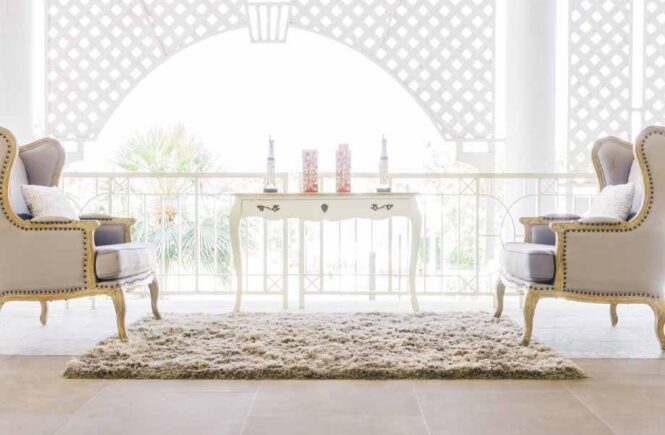Moroccan interior design is renowned for its rich blend of culture, colour, and exquisite craftsmanship. This unique style has gained popularity worldwide for its ability to transport you to the enchanting markets and palaces of Morocco. If you’re looking to infuse your living space with a touch of exotic allure, the Moroccan interior style may be just what you need.
10 Key Features of Moroccan Interior Design
There are several key features in the Moroccan style of interior design. Some of them are as follows:
1. Vibrant Color Palette
Moroccan interior design is characterised by its vibrant and bold colour palette. The use of deep reds, royal blues, rich oranges, and luxurious purples is common. These hues are complemented by earthy tones like terracotta and sandy beige. The key is to create a visually stimulating environment that embodies the warmth of Moroccan culture.
2. Intricate Tilework
Moroccan tiles, known as “zellige” or “mosaic” tiles, are one of the hallmarks of Moroccan interior design. They feature intricate geometric patterns and are often used to adorn floors, walls, and even furniture. These tiles can transform an ordinary room into a stunning work of art.
3. Luxurious Fabrics
Moroccan interior design embraces an opulent and cosy ambience. Plush and comfortable fabrics like silk, satin, and velvet are commonly used for cushions, drapes, and upholstery. These textiles add an inviting touch to the decor.
4. Handcrafted Furniture
Moroccan furniture is characterised by its detailed craftsmanship and ornate designs. Carved wooden pieces, upholstered seating, and decorative metalwork are staples of this style. Intricately designed tables, chairs, and chests often feature geometric patterns and motifs.
5. Unique Lighting
Moroccan lanterns and lamps are exquisite and provide soft, warm illumination. The designs are often pierced metal or stained glass, casting mesmerising patterns of light and shadow. These fixtures serve as functional decor pieces that create a captivating atmosphere.
6. Cultural Motifs and Patterns
Geometric shapes, arabesque motifs, and traditional Moroccan patterns are commonly featured in the design. These symbols are not only visually appealing but also carry cultural significance.
7. Plush Floor Seating
Moroccan-style living rooms often incorporate low-seating arrangements with cushions and pouffes. This style encourages relaxation and gatherings, creating a warm and inviting atmosphere for guests.
8. Open Spaces
Traditional Moroccan design emphasizes open and airy spaces, with interiors arranged around a central courtyard. This design feature helps with natural ventilation and cooling in the hot Moroccan climate. You can adapt this concept to larger spaces or homes with central atriums.
9. Bold Artwork and Decor
Moroccan design embraces an abundance of art and decor items. From intricately patterned tapestries to wall hangings and ceramic pottery, these pieces add character to the space and contribute to the overall aesthetic.
10. Connection to Nature
Putting in elements from nature is essential in Moroccan interior design. Natural materials like wood, stone, and metal are used alongside lush greenery, ornate rugs, and artisanal textiles to create a harmonious connection to the environment.
Thus, Moroccan interior design is a captivating blend of culture and artistry, offering a warm and inviting ambience that is both exotic and cosy. Whether you decide to incorporate some Moroccan elements into your current decor or go all-in with a full transformation, the result will undoubtedly be a space that exudes elegance, colour, and cultural richness. Embrace the beauty of Morocco in your home and create a truly unforgettable space.




